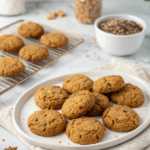Tips for Reducing Your Sugar Intake

Whether you’re looking to improve your overall health or simply trying to cut back on your sugar consumption, the task can often feel daunting. Everyone knows that sugar can be found in many of our favorite foods and drinks, but don’t worry, we’ve got you covered.
In this article, you will find practical and effective tips to help you reduce your sugar intake without sacrificing flavor or enjoyment. So, get ready to take control of your sweet tooth and discover a healthier, low-sugar lifestyle.
Understanding the Effects of Excess Sugar Consumption
Sugar and Its Health Risks
Sugar consumption has become a major concern in today’s society, as it is linked to various health risks. Excess sugar consumption has been associated with an increased risk of obesity, type 2 diabetes, heart disease, and tooth decay. Not only does sugar provide empty calories with no nutritional value, but it also causes a rapid spike in blood sugar levels, leading to energy crashes and cravings for more sugar. It is important to understand the impact of excessive sugar intake on our overall health and take necessary steps to reduce our sugar consumption.
The Science behind Sugar Addiction
Have you ever wondered why it is so hard to resist sugary treats? The answer lies in the science of sugar addiction. Research has shown that sugar activates the same brain regions as drugs of abuse, leading to cravings and a desire for more sugar. This addictive nature of sugar makes it difficult for many people to control their intake and break free from the cycle of sugar addiction. By understanding the science behind sugar addiction, we can better equip ourselves to overcome this challenge and make healthier choices.
The Impact of Excessive Sugar Intake on Overall Health
Excessive sugar consumption can have detrimental effects on our overall health. It not only contributes to weight gain and obesity but also increases the risk of developing chronic diseases such as heart disease, type 2 diabetes, and certain types of cancer. Moreover, a diet high in sugar can negatively impact our mental health, leading to mood swings, cognitive decline, and an increased risk of depression. By reducing our sugar intake, we can improve our overall health and well-being.
Analyzing Your Current Sugar Intake
Keeping Track of Hidden Sugars
To reduce your sugar intake, it is important to become aware of the hidden sugars in your diet. Many packaged and processed foods contain added sugars, even those that are not sweet in taste. Start by keeping track of everything you eat and drink for a few days, noting the amount of sugar in each item. This will help you identify the main sources of sugar in your diet and make more informed choices.
Reading Food Labels
Reading food labels is crucial in understanding the sugar content of the products you consume. Be on the lookout for hidden sugars such as corn syrup, dextrose, fructose, sucrose, and molasses. Pay attention to the serving size and the amount of sugar per serving. Aim to choose products with lower sugar content or opt for sugar-free alternatives.
Identifying Common Sources of Added Sugars
Certain foods and beverages are known to be high in added sugars. These include sugary drinks like soda, sports drinks, and fruit juices, as well as desserts, candies, and sweetened dairy products. Condiments and sauces like ketchup and barbecue sauce can also be significant sources of hidden sugars. By identifying these common culprits, you can be more conscious of your sugar intake and make smarter choices.
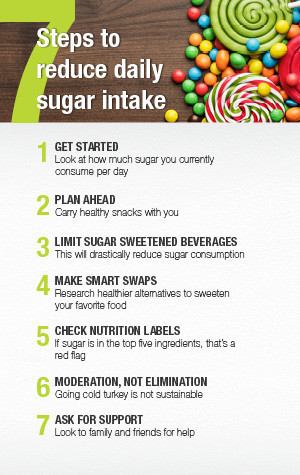
Setting Realistic Goals for Reducing Sugar Consumption
Gradual Reduction vs. Cold Turkey Approach
When it comes to reducing sugar consumption, it is important to find an approach that works best for you. Some individuals find it beneficial to gradually reduce their sugar intake over time, slowly eliminating sugary foods and beverages from their diet. This approach allows for a more sustainable transition and helps prevent feelings of deprivation. On the other hand, some people prefer the cold turkey approach, completely eliminating all sources of added sugar from their diet. Choose the method that suits your lifestyle and preferences.
Calculating Your Daily Sugar Limit
To set realistic goals for reducing sugar consumption, it is important to know how much sugar is recommended for daily intake. The American Heart Association advises a maximum daily intake of 25 grams (6 teaspoons) for women and 36 grams (9 teaspoons) for men. By keeping track of the sugar content in the foods you consume, you can better manage your daily sugar intake and gradually work towards staying within these guidelines.
Identifying the Biggest Culprits
Take a closer look at your current diet and identify the foods and beverages that contribute the most to your sugar intake. These are often the items that provide little to no nutritional value but contain high amounts of added sugars. By identifying the biggest culprits, you can prioritize reducing your consumption of these items and focus on healthier alternatives.
Making Healthier Beverage Choices
Cutting Back on Sugar-Sweetened Drinks
One of the easiest ways to reduce your sugar intake is by cutting back on sugar-sweetened drinks. Soda, energy drinks, and fruit juices are often loaded with added sugars and provide little nutritional value. Opt for water, unsweetened tea, or infused water with fresh fruits and herbs as refreshing and healthier alternatives.
Switching to Low-Sugar Alternatives
If you enjoy the taste of sweetened beverages but want to reduce your sugar intake, consider switching to low-sugar alternatives. Look for drinks labeled as “diet,” “zero sugar,” or “sugar-free.” However, it is important to note that some artificial sweeteners may have their own health risks, so moderation is key.
Flavoring Water Naturally
If plain water feels boring, try flavoring it naturally with fruits and herbs. Adding a slice of lemon, cucumber, or mint leaves can provide a refreshing twist without adding any sugar. Experiment with different combinations to find your favorite flavors and make drinking water more enjoyable.
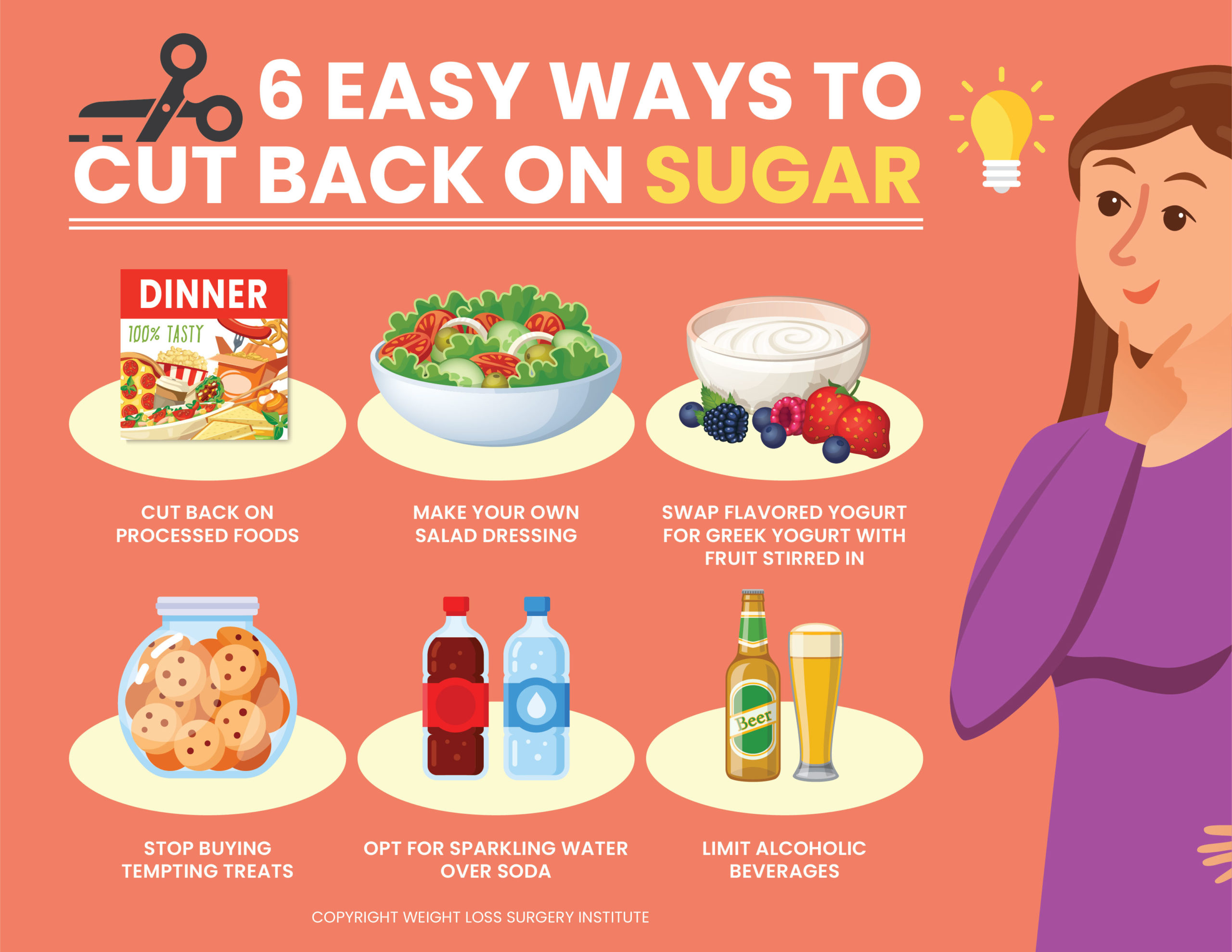
Choosing Nutritious Snacks with Less Sugar
Opting for Fresh Fruits and Vegetables
When it comes to snacking, fresh fruits and vegetables are excellent choices that provide essential nutrients and contain naturally occurring sugars. They are a great alternative to processed snacks that often contain high amounts of added sugars. Keep a variety of fruits and veggies readily available for quick and healthy snacks throughout the day.
Exploring Protein-Rich Snacks
Protein-rich snacks can help keep you feeling full and satisfied while reducing sugar cravings. Choose snacks like Greek yogurt, nuts, seeds, or hard-boiled eggs to provide a good source of protein without the excessive sugar content found in many packaged snacks.
Avoiding Sugary Packaged Snacks
Packaged snacks such as cookies, cakes, and chips are often loaded with added sugars. While they may be convenient, they offer little nutritional value and can contribute to weight gain and other health issues. Opt for healthier alternatives like homemade trail mix, air-popped popcorn, or whole-grain crackers with nut butter to satisfy your cravings without excess sugar.
Cooking and Baking with Less Sugar
Reducing Sugar in Recipes
When cooking or baking, you can reduce the amount of sugar in recipes without sacrificing flavor. Start by cutting the sugar amount by 25% and gradually reduce it further in subsequent attempts. Balance the sweetness with spices or natural flavorings like vanilla extract or citrus zest. Experimenting with alternative flours, such as almond or coconut flour, can also add natural sweetness and reduce the need for additional sugar.
Using Alternative Sweeteners
If you prefer to maintain the sweetness while reducing sugar, there are alternative sweeteners available. Natural options like stevia, monk fruit, and erythritol can be used in moderation as substitutes for refined sugar. However, it is essential to use these sweeteners in moderation and be aware of their individual effects on your body.
Experimenting with Flavor Substitutes
Incorporating flavorful ingredients can compensate for the reduced sugar content in your dishes. Spices like cinnamon, nutmeg, and cardamom add depth and natural sweetness to both sweet and savory recipes. Additionally, using fruits like mashed bananas or unsweetened applesauce can add moisture and natural sweetness in baked goods.
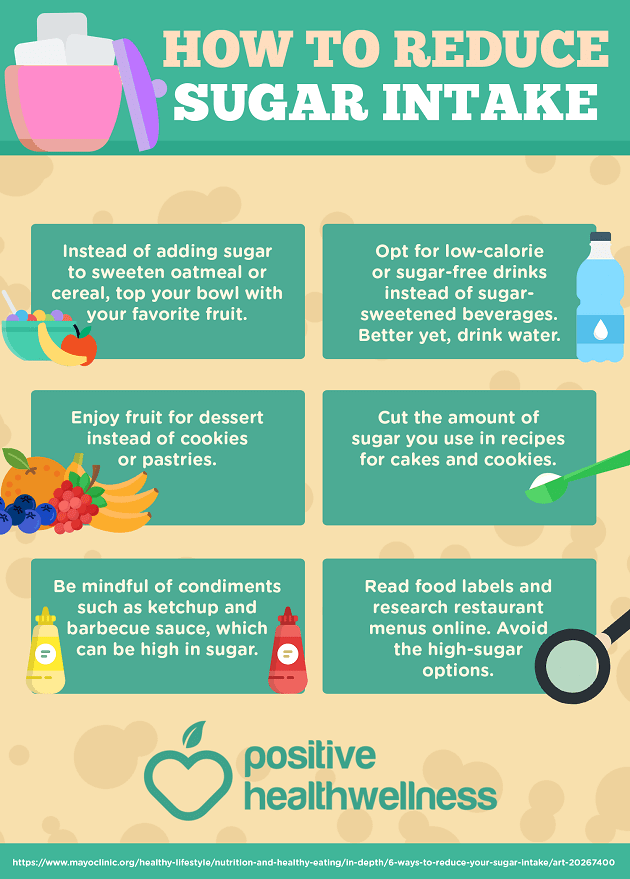
Managing Cravings and Emotional Eating
Finding Healthier Ways to Satisfy Cravings
Cravings for sweets can be challenging to overcome, but there are healthier ways to satisfy them. Instead of reaching for a sugary treat, try opting for a piece of fruit or a small handful of nuts. The natural sugars in fruits can provide a satisfying sweetness, while the healthy fats in nuts can help curb cravings and provide a feeling of fullness.
Identifying Emotional Triggers
Many people turn to sugar as a form of emotional comfort. Identifying your emotional triggers can help you develop healthier coping mechanisms. Find alternative activities that bring you joy or relaxation, such as going for a walk, practicing mindfulness or meditation, or engaging in a creative hobby. By addressing the root causes of emotional eating, you can better manage your cravings and create healthier habits.
Seeking Support and Practicing Mindfulness
Reducing sugar consumption can be challenging, but seeking support from friends, family, or even professional guidance can make a world of difference. Surround yourself with individuals who share similar goals or seek a support group where you can share your struggles and successes. Additionally, practicing mindfulness can help you become more aware of your cravings, emotions, and eating habits, enabling you to make conscious choices and break free from unhealthy patterns.
Creating a Sugar-Free Environment
Cleaning Out Your Pantry
To create a sugar-free environment, start by cleaning out your pantry and removing all sugary temptations. Get rid of processed snacks, sugary cereals, and desserts that may trigger cravings. Instead, stock your pantry with healthier options, such as whole grains, legumes, nuts, and seeds. Having a well-stocked pantry with nutritious ingredients will make it easier to prepare healthy meals and snacks without relying on sugar-laden options.
Stocking up on Healthy Snacks
In addition to cleaning out your pantry, make sure to stock up on healthy snacks. By having a variety of nutritious options readily available, you are less likely to reach for sugary alternatives. Keep fresh fruits and vegetables, plain yogurt, and pre-portioned snack containers with nuts or seeds within reach. This way, you will have plenty of alternatives to satisfy your cravings and stay on track with your reduced sugar intake.
Finding Sugar-Free Substitutions
To further support your efforts in reducing sugar consumption, find sugar-free substitutions for your favorite recipes and food items. There are often healthier alternatives available, such as using natural sweeteners instead of refined sugar or opting for sugar-free condiments and sauces. Be open to trying new products and recipes that allow you to enjoy the flavors you love without the excessive sugar content.
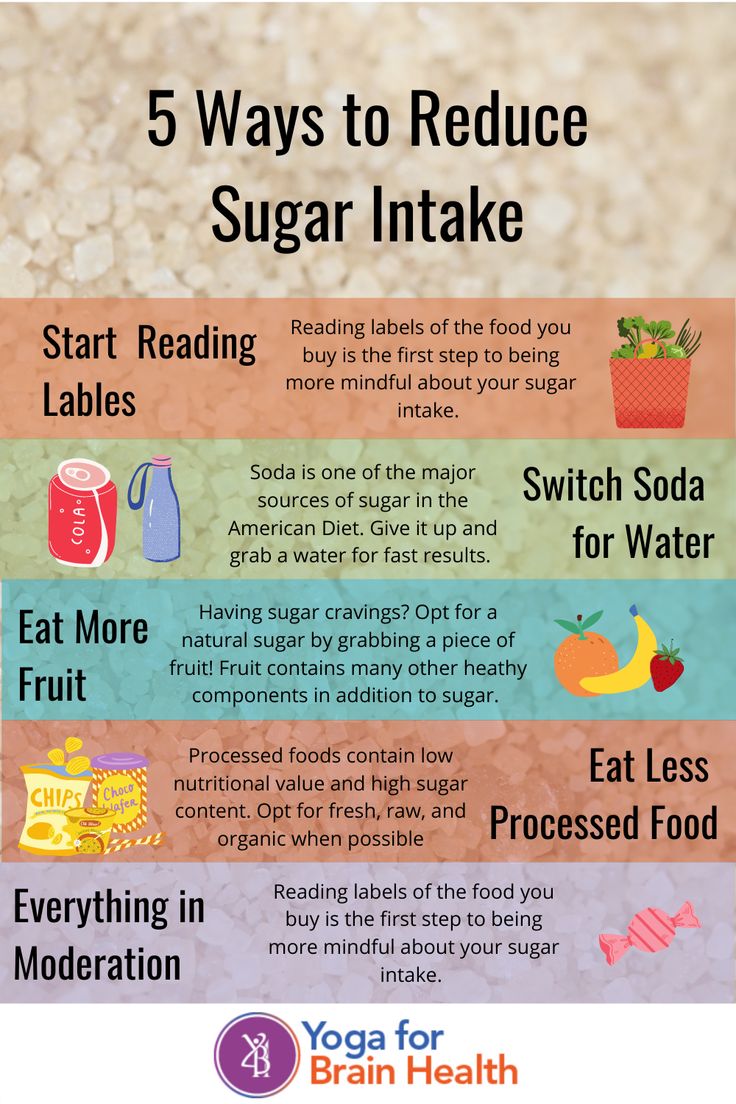
Building a Balanced and Nutritious Diet
Prioritizing Whole Foods
To maintain a balanced and nutritious diet while reducing sugar intake, it is crucial to prioritize whole foods. Whole foods, such as fruits, vegetables, whole grains, lean proteins, and healthy fats, provide essential nutrients and have fewer added sugars compared to processed foods. Fill your plate with a variety of colors and textures, aiming to include a balance of different food groups for a well-rounded and nutrient-rich diet.
Balancing Macronutrients
In addition to prioritizing whole foods, it is important to balance your macronutrients – carbohydrates, proteins, and fats – to support your overall health and energy levels. Include a source of protein, such as lean meats, poultry, fish, tofu, or legumes, in each meal. Pair it with a carbohydrate source like whole grains or starchy vegetables and add healthy fats from sources like olive oil, avocados, or nuts. This balanced approach will help stabilize your blood sugar levels and keep you feeling satisfied.
Creating Meal Plans
Meal planning can be a helpful strategy to ensure you have nutritious and low-sugar meals throughout the week. Take some time to plan your meals, including breakfast, lunch, dinner, and snacks, and make a shopping list accordingly. Include a variety of fruits, vegetables, proteins, and whole grains to create balanced and satisfying meals. By planning ahead, you can minimize the chances of reaching for unhealthy options and maintain a consistent reduction in sugar consumption.
Staying Accountable and Tracking Progress
Using Mobile Apps or Journals
To stay accountable and track your progress, consider using mobile apps or journals to record your food intake, sugar consumption, and emotions related to your eating habits. Many apps are available that allow you to easily track and analyze your sugar intake, providing valuable insights and motivating you to stay on track. Alternatively, keeping a handwritten journal can help you reflect on your journey, celebrate milestones, and identify areas for improvement.
Rewarding Milestones
Reducing sugar consumption is an achievement worth celebrating. Set milestones for yourself, such as going a week without added sugars or successfully completing a month on your reduced sugar plan. Treat yourself to non-food rewards, such as a relaxing spa day, a new workout outfit, or a special outing with friends or loved ones. These rewards not only provide motivation but also reinforce positive habits.
Getting Support from Friends or Family
Building a support system is essential for long-term success in reducing sugar consumption. Share your goals with friends or family members who can provide encouragement, accountability, and even join you on your journey. Having someone to share the ups and downs with can make a significant difference in staying committed to your goals.
Consider involving loved ones in
meal planning, cooking, or even trying new
sugar-free recipes together.
Share:
Related Posts

Weight Gain Food List for Women: Nutrient-Rich Foods to Build Healthy Curves
Looking to gain weight the healthy way? Discover the best weight gain food list for women featuring high-calorie, nutrient-dense options that support muscle growth and curves.
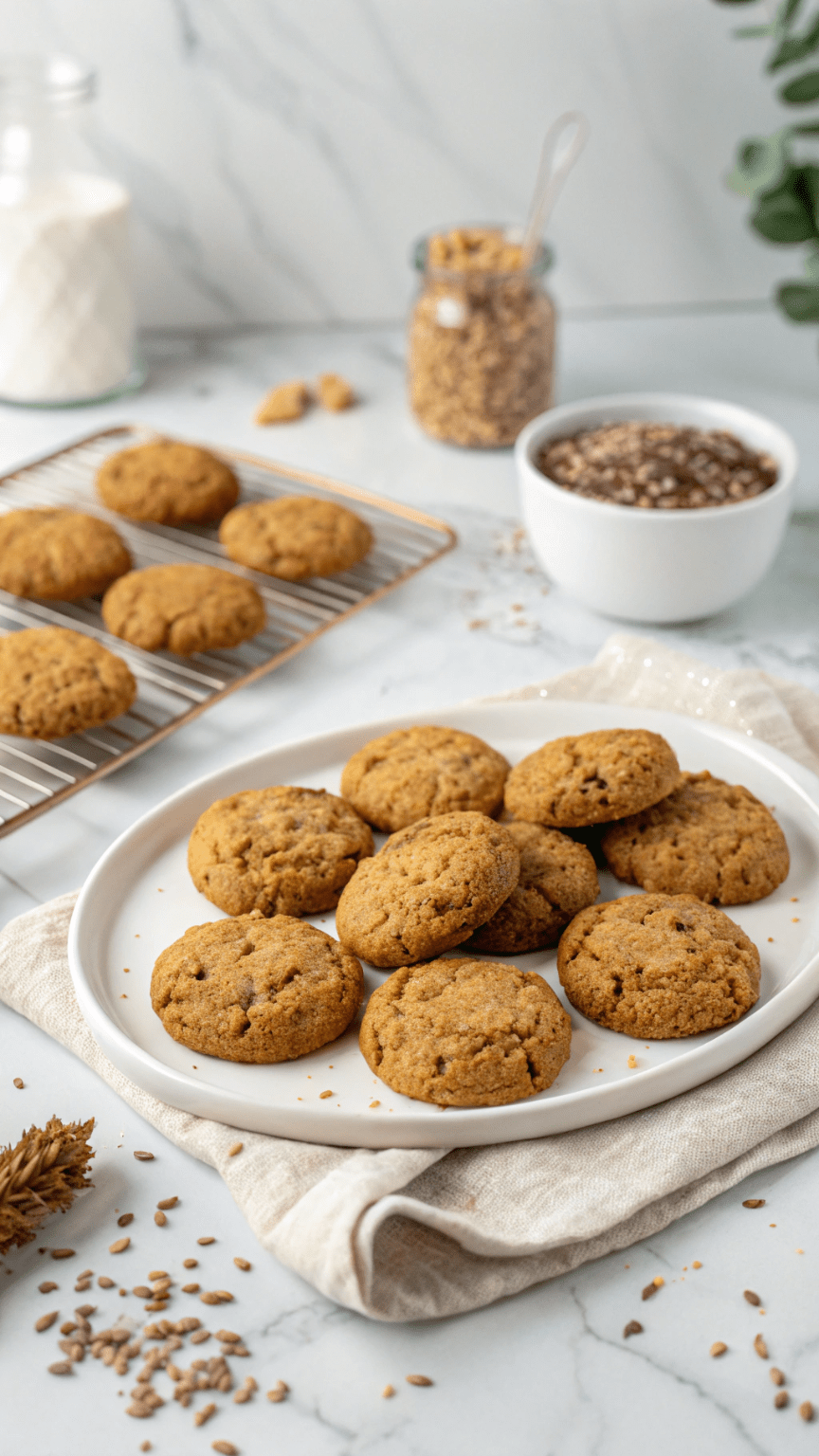
Flaxseed Cookies
hese chewy flaxseed cookies are a healthy, fiber-packed treat perfect for snacking. Made with simple ingredients, they’re gluten-free, naturally sweetened, and delicious!

How to Reduce Sugar Cravings Naturally (Without Feeling Deprived)
Want to cut back on sugar without the cravings and frustration? Learn practical, low-stress ways women can reduce sugar intake while still enjoying food and feeling satisfied.

Vegan Chili Soup
This easy vegan chili is packed with protein-rich beans, veggies, and bold spices. Perfect for a cozy, healthy, one-pot meal. Gluten-free, dairy-free, and meal-prep friendly!




